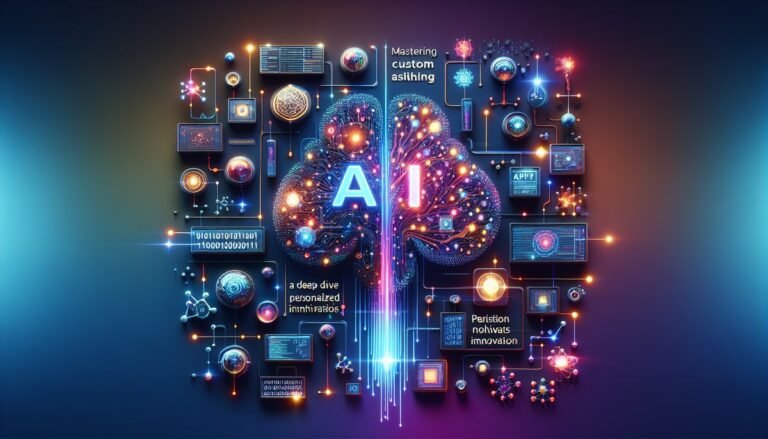Imagine a world where technology acts as a personal assistant, performing mundane tasks and freeing you from the daily grind. That’s the promise of artificial intelligence, a digital revolution that offers the tantalizing prospect of reclaiming precious time. However, this rosy scenario comes with a caveat: such a luxury might only be available to those who can afford it. While AI is hailed for its potential to save up to 14 hours a week, the reality is that this time-saving miracle could remain a privilege reserved for the affluent. This disparity raises profound questions about accessibility and equity in the age of automation.
The Cost of Convenience
At the heart of this issue lies a fundamental question: How much are we willing to pay for convenience? For those with ample financial resources, AI-powered tools such as advanced personal assistants, smart home systems, and automated business solutions are within easy reach. These technologies promise efficiency, allowing affluent users to offload tasks and focus on what truly matters. As a result, these individuals can enjoy a lifestyle where work-life balance is more than just a buzzword. However, the steep cost of these technologies means that they are largely inaccessible to the average consumer, creating a digital divide where only the wealthy can fully benefit from the AI revolution.
The Role of AI in Time Management
AI has the potential to transform how we manage our time, streamlining everything from scheduling to household chores. Consider a scenario where an AI-powered personal assistant seamlessly organizes meetings, orders groceries, and even manages investments. This level of automation can significantly reduce daily stress and increase productivity. Yet, the irony is that those who would benefit most from these time-saving solutions—busy parents, small business owners, and overworked employees—may find themselves priced out of the market. This disparity is highlighted in discussions around wealth inequality, where the economic gap is further widened by unequal access to technological advancements.
Economic Implications and Future Prospects
The economic implications of this divide are profound. As businesses and individuals invest in AI to gain a competitive edge, those without access risk being left behind in an increasingly fast-paced world. The trend raises important questions about the future of work and the potential for increased societal stratification. Will AI further concentrate wealth and opportunity, or can it be harnessed to democratize productivity and innovation? The answer depends on how policymakers, technologists, and society at large choose to address the challenges of accessibility and affordability.
In conclusion, while AI offers the tantalizing promise of more free time, the reality is complex. The benefits are clear, yet so are the barriers. As we stand on the brink of widespread AI adoption, it is crucial to consider who stands to gain and who might be left behind. Ensuring equitable access to these technologies could transform not just individual lives, but society as a whole, creating a future where time is a resource shared by all, not just the privileged few.
The Dichotomy of AI’s Time-Saving Promise
In an era where artificial intelligence is rapidly transforming industries, the promise of AI to free up 14 hours a week is tantalizing. This prospect, however, is not universally accessible. The reality is that the benefits of AI are disproportionately skewed towards those who can afford the luxury of buying time.
AI tools are designed to streamline tasks, automate mundane chores, and enhance productivity. Yet, the initial investment needed to integrate these technologies into one’s daily life is substantial. For instance, premium AI-driven personal assistants or smart home devices often come with hefty price tags. These tools can significantly reduce the time spent on household management or scheduling, but their cost places them out of reach for the average consumer.
The Financial Barrier to AI Adoption
Let’s consider the case of AI-powered scheduling software. Such platforms can effortlessly manage meetings, optimize travel arrangements, and even predict the best times for productivity. However, the subscription fees for these comprehensive services can be steep, ranging from hundreds to thousands of dollars annually. This creates a barrier to entry that only the financially privileged can cross.
Moreover, businesses that leverage AI to enhance productivity often require substantial upfront investments in infrastructure and training. According to a report from McKinsey & Company, companies that successfully implement AI can see productivity gains of up to 40%. However, achieving such results demands significant financial resources, which are more readily available to larger, wealthier enterprises.
Examples from the Corporate World
In the corporate sphere, leading companies have already reaped the rewards of AI integration. For instance, global giants like Amazon and Google utilize AI to streamline operations, enhancing their competitive edge while also reducing operational costs. These savings, however, are not typically passed down to employees or consumers in terms of time savings or reduced prices, but rather reinvested into further technological advancements.
Personal Wealth as a Gateway to AI Benefits
For individuals, the equation is similar. Those with higher disposable incomes can afford to invest in AI technologies that automate daily tasks. Consider a hypothetical family with an annual income well above the national average: they might employ AI-driven home systems to handle everything from grocery shopping to climate control, effectively saving hours each week.
In contrast, middle-income families might find themselves priced out of these conveniences. The cost of entry-level AI devices might seem reasonable, but the ongoing expenses for premium services and necessary updates can quickly add up, limiting broader access.
Potential Solutions and Future Outlook
Addressing this disparity requires both policy intervention and technological innovation. Governments and tech companies need to collaborate to democratize access to AI technologies. Subsidies or tax incentives for AI adoption could be one approach, similar to those offered for renewable energy installations.
Additionally, tech companies could explore tiered pricing models that allow broader access without compromising on functionality. This would involve offering basic AI services at lower costs, with premium features available for those willing to pay more. Such a model could help bridge the gap between different income groups.
Looking Ahead: AI for All?
As AI continues to evolve, the hope is that its benefits will become more evenly distributed across society. Initiatives like the AI Readiness Index by Oxford Insights highlight the importance of preparing societies to harness AI’s potential effectively and equitably. The key will be ensuring that AI-driven time savings are accessible to all, not just the affluent.
Ultimately, while AI holds the potential to offer significant time savings, realizing this potential equitably requires intentional effort. By addressing the financial barriers and fostering inclusive technological development, society can work towards a future where AI’s promise benefits everyone, not just the privileged few.
Unlocking the Time Treasure: AI’s Role in Modern Life
The allure of AI lies in its promise to transform everyday tasks, potentially freeing up precious hours each week. However, as highlighted by the notion that AI’s benefits might primarily favor the affluent, this technology reflects existing societal divides. The wealthy are more equipped to integrate AI into their lives, leveraging it to enhance productivity and efficiency. This capability creates a cycle where those who can afford such technology continue to gain more time and, consequently, more opportunities.
As AI continues to evolve, the challenge will be to democratize access to its benefits. The focus should shift towards creating scalable solutions that are accessible to a broader demographic, ensuring that AI doesn’t merely amplify the advantages of the wealthy but rather levels the playing field. This requires innovation beyond traditional tech models, looking at how AI can be integrated into public services and affordable consumer products.
What are the key barriers to AI accessibility?
The main barriers include high costs, a lack of digital literacy, and limited access to technology infrastructure in less affluent areas. Addressing these will be crucial for widespread AI adoption.
Can AI truly save 14 hours a week for everyone?
While AI has the potential to save significant time by automating routine tasks, the actual time saved will depend on how effectively individuals can integrate AI tools into their routines, which often requires financial and educational resources.
How can AI become more accessible to lower-income individuals?
To increase accessibility, efforts should focus on reducing costs, improving digital literacy, and investing in infrastructure. Public-private partnerships could play a pivotal role in developing affordable AI solutions.
Are there examples of AI benefiting less affluent communities?
Yes, AI has been used in several community-focused initiatives, such as predictive analytics for resource distribution in non-profits or AI-driven educational tools in schools lacking resources. However, these examples are still relatively few and need scaling.
Dive Deeper into AI & Tech
- Best Ai Tools Product Teams 2025
- Best Ai Tools Content Seo Video 2025
- Ai Product Management Tools 2025
- Talkie Ai Guide 2025
- How To Use Janitor Ai Roleplay Guide
- Perchance Ai Chat Story Generator 2025
- Spicy Chat Ai Guide 2025
- Zoom Ai Companion Guide 2025
- Ai Roleplay Guide 2025
- Ai Content Generators 2025
- Make Ai Character Guide 2025






